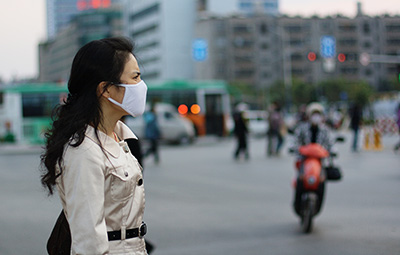The report shows:
- Globally there are around 340 million occupational accidents and 160 million victims of work-related diseases each year. The corresponding loss of workdays accounts for almost 4% of the world’s GDP, or some US$3.2 trillion.
- Although many countries have signed up to international safety conventions, and have laws and regulations in place, monitoring and gathering data on work-related injuries is ‘occasional, at best’ in most countries, report finds.
- Reliable and credible safety data and consistent monitoring does not exist in usable formats for many countries in Africa, the Middle East, Asia, and Latin America.
Mapping Risk, produced by Lloyd’s Register Foundation and Gallup, is a compendium of some of the main data sources on safety and risk available from around the world. The report explores areas where data collection is poor and needs improving, as well as where the number of accidents are high, in order to support the best possible decision-making around accident prevention.
Fragmented safety landscape
 The report found that risk and safety data are often dispersed and fragmented and there is no single set of health and safety performance indicators. International organisations such as the International Labour Organization (ILO) and the World Health Organization (WHO) have established datasets and conventions on safety. However, despite a large number of countries signing up to these, implementation and enforcement is weak in many countries.
The report found that risk and safety data are often dispersed and fragmented and there is no single set of health and safety performance indicators. International organisations such as the International Labour Organization (ILO) and the World Health Organization (WHO) have established datasets and conventions on safety. However, despite a large number of countries signing up to these, implementation and enforcement is weak in many countries.
Additionally, while some countries provide comprehensive data on topics such as occupational risk and safety, others provide very patchy data, if any. Data quality and reliability varies, often reflecting levels of economic development, although not always: some of the wealthier countries (such as the Gulf Cooperation Council countries) do not publish regular, reliable data on workplace accidents and fatalities.
Other findings include:
An estimated 2.78 million workers die each year from occupational accidents and work-related diseases. Some two-thirds of work-related deaths are in Asia, while Africa and Europe each account for just under than 12% of global workplace fatalities.
- In the European Union, there were over 3,000 work-related fatalities in 2015. The European Union’s Occupational Safety and Health Agency (OSHA) estimates that work-related ill-health and injury cost the European Union around 3.3% of its GDP a year, or some €476 billion.
- Worldwide, natural disasters are estimated to have resulted in 10,300 fatalities in 2018, of which the earthquake and resulting tsunami in Indonesia were the most deadly, resulting in 2,256 fatalities. This stands in contrast to a high in 2010 of more than 300,000 deaths from natural disasters – the year in which an earthquake is estimated to have killed more than 100,000 people in Haiti1.
Ruth Boumphrey, Director of Research and Strategic Programmes at Lloyd’s Register Foundation, said:
“There is a hidden burden of injury around the world. In many areas, accidents and deaths aren’t recorded and people’s stories aren’t told or heard. For example, many countries don’t issue death certificates, so it’s impossible to know where poor safety has been at fault, and in other countries deaths at sea often go unrecorded. We want to understand where in the world these gaps in data are, and where people are being hurt most frequently, so we can work with our partners to create new interventions and fund new projects to improve data collection and head off accidents more effectively.”
Andrew Rzepa from Gallup said:
“This report shows that globally, safety and risk data are very patchy. We found that even for countries and entities which collect risk and safety data, there are issues with coverage
and often important methodological differences hinder cross-country comparisons, meaning the true picture of global safety is still opaque. With this report and the new World Risk Poll, we look forward to working closely with Lloyd’s Register Foundation over the coming years to identify and close the gap between actual and perceived risk, in order to help make people safer.”
1. Athena R. Kolbe, Royce A. Hutson, Harry Shannon, Eileen Trzcinski, Bart Miles, Naomi Levitz, Marie Puccio, Leah James, Jean Roger Noel & Robert Muggah (2010) Mortality, crime and access to basic needs before and after the Haiti earthquake: a random survey of Port-au-Prince house-holds, Medicine, Conflict and Survival, 26:4, 281-297, DOI: 10.1080/13623699.2010.535279
Stay up to date with the Lloyd's Register Foundation:
World Risk Poll
The world’s largest study into how people think and feel about risk and safety.

World Risk Poll
Powered by Gallup, the poll surveys over 140,000 people from more than 140 countries to better understand how to improve our understanding of risk and make the world a safer place.
Find out more